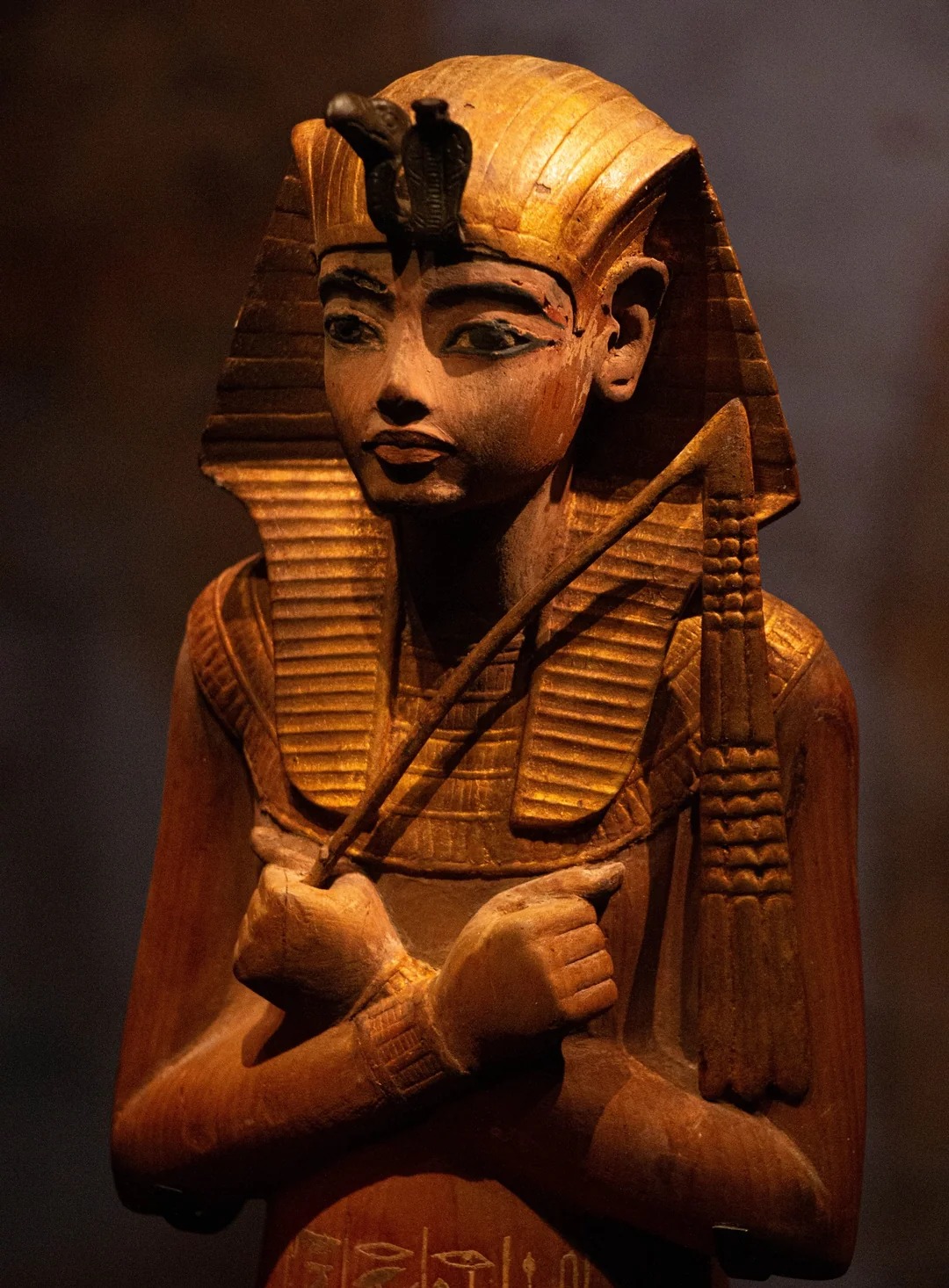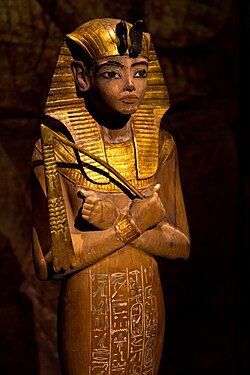Funerary Figure (Shabti) of Tutankhamun

Funerary Figure (Shabti) of Tutankhamun
Period: New Kingdom, 18th Dynasty | Date: c. 1332–1323 B.C.
Findspot: Tomb of Tutankhamun (KV62), Valley of the Kings, Thebes

This exquisite funerary figure, or shabti, was discovered in the tomb of King Tutankhamun, and stands out for both its impressive size (51.6 cm) and exceptional craftsmanship.

Tutankhamun, often called King Tut, was one of the most famous pharaohs of ancient Egypt. He ruled during the 18th Dynasty of the New Kingdom, around 1332–1323 BCE. Tutankhamun ascended the throne at a very young age—likely around nine—and reigned for only about ten years before dying unexpectedly at around eighteen or nineteen years old. Despite his short reign, he played an important role in restoring traditional Egyptian religion and art after his predecessor Akhenaten’s radical shift to the worship of a single god, Aten.

Tutankhamun’s fame today comes largely from the discovery of his nearly intact tomb (KV62) in the Valley of the Kings by Howard Carter in 1922. Inside were thousands of extraordinary treasures, including the young king’s iconic gold funerary mask, jewelry, chariots, and weapons—all perfectly preserved for over three thousand years. These artifacts provided invaluable insight into ancient Egyptian craftsmanship, burial practices, and royal life.

Although Tutankhamun’s reign was brief, his tomb’s discovery made him an eternal symbol of ancient Egypt’s splendor and mystery, captivating the world and transforming him into one of history’s most recognizable figures.











